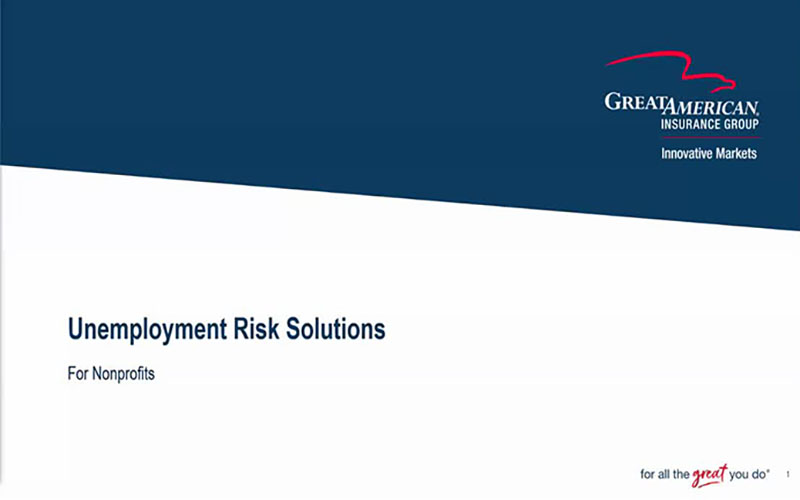Help Mitigate Risk by Responding to Red Flag Behavior

Authored by Praesidium, this article underscores our shared dedication to equipping organizations with the tools and knowledge needed to prevent abuse.
It's important for staff and volunteers to understand that it’s acceptable to take action when they have become aware of inappropriate behavior. They shouldn’t fear retaliation for reporting suspicious behavior. Nearly any situation can be managed.
Steps for staff and volunteers to take when they notice inappropriate behavior include:
- It is acceptable to spotlight and interrupt suspicious and inappropriate behavior. If they witness the inappropriate behavior, then spotlighting should be done immediately in real-time to interrupt the behavior without delay.
- Report red-flag behaviors and policy violations to a supervisor immediately.
- Identify the concern, and clearly state what the concern is.
- Explain why the behavior is inappropriate. Be clear and include written policies and procedures for support.
- Provide clear instructions for what the individuals should do next and how things should go from there.
- If the behavior does not stop, keep reporting suspicions up the chain of command.
- You can report anonymously if needed.
What Should Supervisors Do in Response to Red-Flag Behaviors?
When someone gets the courage to report a suspicion or concern, it is vital to take the report seriously and investigate the situation immediately. Your supervisors should be trained to do the following:
- Take these behaviors seriously.
- Respond immediately.
- Report to administration and management.
- Collect as much information as possible regarding the incident.
- Develop and document the response corrective action.
- Get back to the person reporting the concern.
- If you believe the behavior is abusive, then report it to the proper authorities.
Red-Flag Behavior Response Matrix
It’s important to understand that there is not a “one-size-fits-all” response to red-flag behaviors. Responses must meet the needs of the situation on a case-by-case basis, based on the circumstances of the behavior, such as the following:
- Frequency
- Answers to essential questions and information gathered
- Written policies and procedures
Ask yourself the following questions when addressing each unique case:
- What past behavior do we need to consider?
- Have we minimized or rationalized past behavior(s)?
- Have we involved other departments, such as Human Resources, as necessary?
- Is the person who committed the red-flag behavior trainable?
It’s often necessary to consider a continuum of responses to red-flag behaviors. Begin at the left of the continuum and work towards the right side. Then, determine the response that is most commensurate to the severity of the behavior.
| Do Nothing | Terminate | ||||||
| Document | Increase Supervision | Survey | Counsel | Train | Write Up | Reassign | Suspend |
Responding to Peer-to-Peer Sexual Activity
Peer-to-peer sexual activity could be “normal curiosity”, or it could be abuse. In general, sexual curiosity or mutual exploration can be any of the following:
- An “information gathering” process wherein participants look at or touch one another.
- Participants trying to determine appropriate gender roles.
- A volunteer activity occurring between peers of the same age.
- An activity with no established definition. The criterion to be considered are as follows:
- Age, size or developmental differences between participants.
- Difference in status within the peer group.
- The type of sexual activity.
- The level of coercion/force.
- The reaction of participants involved.
Steps for Interruption of Peer-to-Peer Sexual Activity
Steps for staff and volunteer interruption of peer-to-peer sexual activity include:
- Respond immediately to behaviors.
- Do not try to determine if the sexual activity is abuse or “normal curiosity.”
- Document the behaviors.
- Continue reporting if the participant continues to exhibit inappropriate behaviors.
What Should Supervisors Do in Response to Peer-to-Peer Sexual Activity?
When someone gets the courage to report a suspicion or concern, it is vital to take the report seriously and investigate the situation immediately. You should do the following:
- Respond quickly.
- Report the incident to the administrator and management.
- Notify parents and guardians of the participants involved in the incident.
- Report the incident to the proper authorities if necessary.
- Follow the continuum of responses.
Peer-to-Peer Sexual Activity Response Matrix
When responding to peer-to-peer sexual activity, it is important to understand that there is not a “one-size-fits-all” response. Based on the circumstances of the activity (including frequency), along with answers to essential questions and information gathered. Finally, written policies and procedures and responses must meet the needs of the situation on a case-by-case basis. As a result, it is often necessary to consider a continuum of responses to peer-to-peer sexual activity.
When a case is reported, here a few essential questions to ask yourself:
- Is this an incident of abuse?
- Can our program continue to serve the participant(s)?
- If so, what measures are we putting in place?
- Have we discussed the incident and corrective actions with all staff/volunteers?
It’s often necessary to consider a continuum of responses to address peer-to-peer sexual activity. Begin at the left of the continuum and work towards the right side, at the response that is most commensurate to the severity of the behavior.
| Do Nothing | Expel | |||||
| Educate | Communicate with Parents/Guardians | Document | Increase Training/Supervision | Write Up | Suspend/Excel | Safety Plan |
Responding to Allegations of Abuse
You should do the following when responding to an abuse disclosure:
- Provide your undivided attention to the survivor, and take the time needed to listen completely to them. Sympathize with the survivor and let them know you are genuinely sorry for what has happened to them.
- Be sensitive to vague disclosures. When in doubt, report.
- Avoid expressing shock or outrage. This can make the survivor feel uncomfortable and fearful.
- Do not threaten or condemn the alleged perpetrator.
- Let the survivor know that you believe them.
- Tell the survivor that they were right to disclose the activity.
- Assure the survivor that the abuse was not their fault.
- Reassure the survivor that they are going to be safe.
- Avoid questions or statements that could make the survivor feel responsible.
- Write down exactly what was said and every detail that the survivor discloses.
- Follow authorized reporting procedures.
Three Key Principles When Responding to Allegations of Abuse
Your organizational response to allegations of abuse should be centered around three (3) key principles:
- Be Compassionate – Sympathy is not an admission of guilt. Expressing remorse and sorrow for what has happened makes the survivor feel valued and cared for, which leads to healing.
- Be Transparent – Not communicating with key individuals will lead to anger and frustration. Providing factual and truthful information lets everyone know that something is being done. If your organization is not communicating about the response, you can rest assured that someone else is. The question is, “Is their story the one you want being told?”
- Be Confident – Now is not the time to be shy and/or timid. Your organization desperately needs to be able to communicate to all external customers that you are prepared and ready to deal with this allegation. Let them know what they can expect as part of your response and ask them to hold you accountable for this.
The Four Stages of Organizational Response to Abuse Allegations
There are four (4) Stages of organizational response to allegations of abuse:
Stage 1 – Activate. Activate your written response procedures and management plan. Now is not the time to develop this plan. The plan should already be written, communicated, rehearsed and ready to deploy. If your organization does not have a written response plan ready, then it will be too late at the time of disclosure and everyone will see that.
Stage 2 – Gather. Gather all the information that you possibly can and document everything.
- Document all incidents and corrective actions.
- Document full names of everyone involved, along with the following:
- Sex
- Ages of All
- Dates
- Times
- Locations
Avoid writing subjective opinions and/or conclusions in documentation materials. Include all details and be clear & concise.
The presence of red-flag behaviors does not mean that A) Abuse is happening or B) That a person is an offender. Red-flag behaviors call attention to areas that need further investigation. The more red-flag behaviors noted should result in a deeper investigation until they are resolved. You should never use red-flag behaviors alone to determine facts.
Stage 3 – Initiate. Initiate organizational internal and external response communications. Show compassion and state the facts only. Include information like:
- Name of the person(s) involved.
- Type of contact. (e-mail, internet, place, etc.).
- Date(s) and time(s) of contact.
- Case number(s).
- Summary of interactions;
- Plans for follow-up;
Stage 4 – Provide. Provide resources to:
- Survivor(s)
- Staff and volunteers
- Participants
- Parents and guardians
- Authorities
Next Steps: Organizational Quick Assessment
Use the quick assessment below to review the effectiveness of your organization’s current controls measures and determine whether they continue to provide protection, or whether different controls may be more effective.
| Critical Control Measure | YES/NO |
| Do our procedures truly capture responding to red-flag behaviors that do not rise to the level of abuse? | |
| Do we have a responding procedure in place that has a clear threshold for when to reach out to parents? | |
| Do our responding procedures provide a confident, compassionate, transparent response? | |
| Do we have a clear procedure for responding to peer-to-peer incidences? |
Abuse Prevention: Plan. Protect. Respond.
Learn practical ways to help stop abuse in your community.









.jpeg?sfvrsn=dbf923b1_1)




.jpeg?sfvrsn=c50521b1_1)